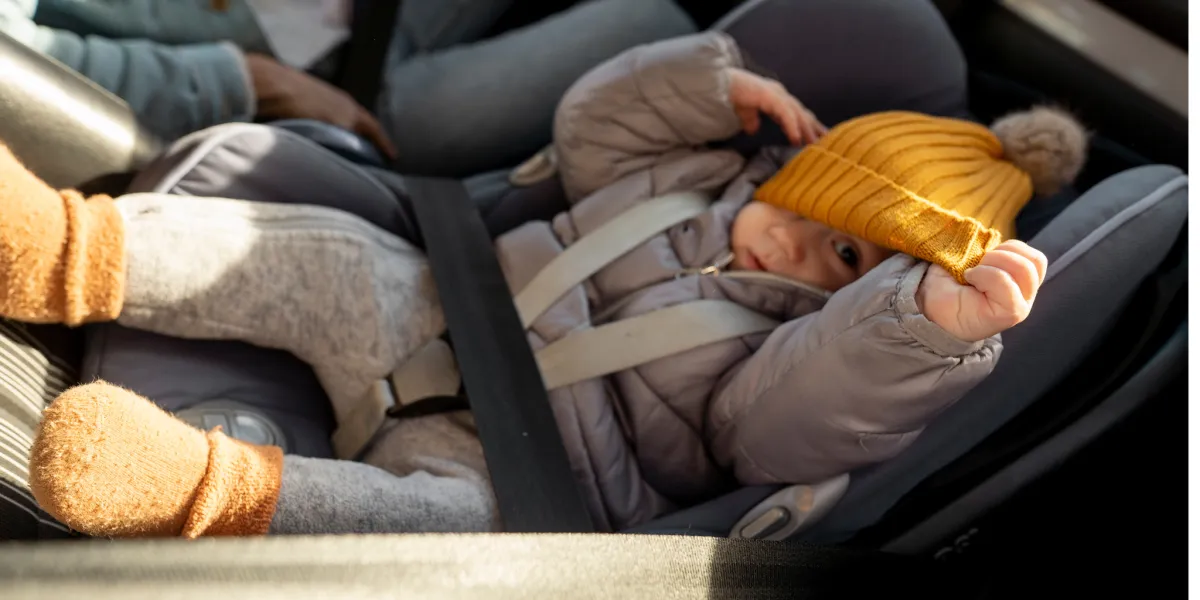
Infant Safety: Car Seats, Baby-Proofing, and Preventing Accidents
Your entire world changes when you bring your baby home. What once seemed harmless—sharp corners, dangling cords, loose rugs—suddenly becomes a safety hazard for the little one.
As a pediatrician, I talk with families often about preventing injuries in infants and children. I am not just speaking from the medical aspect of me but also speaking from experience. I had my first child while I was still in pediatric residency training. We were living in a small condo with limited space and even less storage. I had to completely rethink how our home was set up. I moved furniture, cleared out clutter, and we got rid of anything that posed any risk to the baby. It wasn’t easy, but it was a necessary step I needed to take at that time. And I’m glad we did it early.
To be honest, keeping your baby safe doesn’t mean wrapping everything in bubble wrap. No, it means thinking ahead and putting simple systems in place to prevent accidents before they happen.
Car Seat Safety
The baby’s first ride home from the hospital should not be the first time you’ll need to think about safety as some people always say. It should be part of the preparation before the baby is born. Your baby’s car seat is one of the most important safety tools you’ll use in their first years.
As recommended by the American Academy of Pediatrics, all infants should ride in a rear-facing car seat from birth until at least age 2, or until they reach the height and weight limits of the seat. This is very important as rear-facing seats protect the head, neck, and spine in the event of a crash.
Make sure the car seat:
Is properly installed (get help from a certified technician if you're unsure)
Is placed in the back seat, never the front as stated above
Have their straps lie flat and snug across the shoulders and chest
And the chest clip at armpit level, not on the belly or neck
Avoid bulky coats or blankets under the straps. If it’s a cold season, tuck a blanket over the harness after buckling your baby in.
Baby-Proofing the Home
Infants may not move much at first, but once they start rolling, scooting, or crawling, everything changes. The earlier you baby-proof, the better. You don’t want to be caught unprepared.
Start with these key areas:
Electrical outlets – Use outlet covers or plates
Cords and blinds – Keep them out of reach or use cord winders
Sharp furniture edges – Pad corners of tables and low furniture
Cleaning supplies and medicine – Lock them away in high cabinets
Choking hazards – Anything that fits through a toilet paper roll is too small and can cause choking hazard
Furniture tipping – Anchor bookshelves, dressers, and TVs to the wall very well.
Even in our small condo, I had to rearrange furniture to create clear paths and block access to unstable items. While it meant giving up a few things, including a decorative shelf we loved—but to us, safety came first and that was how we took it.
Preventing Accidents Before They Happen
Most injuries in infancy happen in everyday moments—rolling off a changing table, falling from a couch, tipping over in a baby seat. The key is to stay one step ahead before an accident happens.
Never leave your baby unattended while they are on a raised surface, even for a second. Always buckle your baby into bouncers or swings, even if you're right next to them.
During bath time, keep one hand on your baby at all times. Water accidents can happen in just inches of water, in just a few seconds.
Once your baby starts crawling, get down on their level. Crawl through your space and see what’s within reach. You’ll be surprised what they can get into—and how fast.
Dear parents, creating a safe environment doesn’t happen all at once. It’s okay to take it step by step. What matters is to anticipate what dangers can happen and be prepared to act before they happen.
🔬 Myth vs. Medicine Spotlight: What Research Says
🧠 Myth: “Car seats are only necessary for long trips.”
Medicine: Car seats are crucial for every trip, regardless of distance. According to the American Academy of Pediatrics, all infants and toddlers should ride in a rear-facing car safety seat as long as possible, until they reach the highest weight or height allowed by their seat's manufacturer . Proper use of car seats significantly reduces the risk of injury in the event of a crash.
🧠 Myth: “Baby-proofing can wait until the baby starts crawling.”
Medicine: It's best to start baby-proofing before your baby becomes mobile. The U.S. Consumer Product Safety Commission recommends installing safety latches and locks on cabinets and drawers, using safety gates, and securing furniture to prevent tip-over accidents . Early baby-proofing helps prevent accidents as babies often become mobile unexpectedly.
📚 References
American Academy of Pediatrics. (2021). Car Seats: Information for Families. HealthyChildren.org.
U.S. Consumer Product Safety Commission. (n.d.). Childproofing Your Home. Retrieved from https://www.cpsc.gov/safety-education/safety-guides/kids-and-babies/Childproofing-Your-Home
